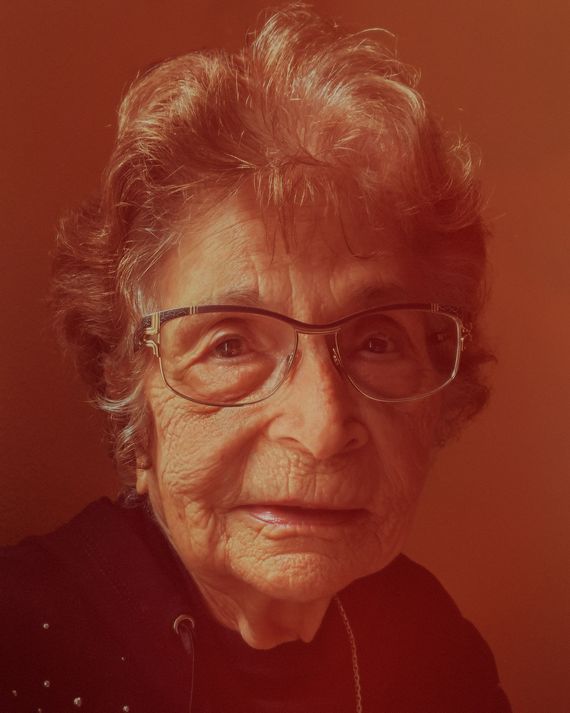
The Cut is in constant, dynamic conversation with women about the issues that matter to them most: politics, feminism, work, money, relationships, mental health, fashion, and issues relating to equality. We address our readers’ lives head on — ideally with wit, honesty, and power. Below, you’ll find the ten stories that proved they did just that — our top-ten most-read stories of the year. The list includes an electrifying Rebecca Traister column in which she asks, “What’s so ‘disruptive’ about a woman standing up for herself?” as well as Emily Gould writing on the experience of internet-based public disgrace. Keep scrolling for the complete list.
10. “Replaying My Shame,” by Emily Gould
Way back in 2007, before Instagram influencers existed, before presidents were on Twitter, and before anyone thought Facebook could undermine democracy, Emily Gould got her start as a writer at Gawker. It was also when she confronted the searing power of public shame, in an incident that still reverberates 13 years later. Back then, “it wasn’t clear how consequential Americans’ deep ambivalence about fame and its shadow twin, shame, would soon become,” Gould writes. In this essay, she takes a look back at her experience and tries to make sense of it all.
9. “The Tyranny of Terrazzo,” by Molly Fischer
We live in a world saturated by what Fischer calls, in this funny, perceptive essay, “the millennial aesthetic” — hazy shades of pink, terrazzo, boob posters, ochre, soft corners, and “Instagrammable” typefaces. She explores the trend’s origins, its historical antecedents, our fixation on it, and why its symbiotic relationship with consumer products means it just won’t go away.
8. “Surviving It All,” by Rebecca Traister
In 1941, as a teen, Marga Griesbach was sent to a Latvian ghetto, and then in 1944, the Stutthof concentration camp. In February 2020, she left her home just as COVID-19 was spreading and embarked on a cruise around the world. Her story, told here by Rebecca Traister, was the centerpiece of New York’s special issue devoted to the very old and what we can learn from them. From Marga, we learned how much current events reshape our memories and how they look to us today.
7. Sex Diary: “The Woman Whose Husband Is Sleeping With Her Best Friend”
Our Sex Diaries series asks anonymous city dwellers to record a week in their sex lives — with comic, tragic, often sexy, and always revealing results. This particular log from September spread like wildfire online, particularly on Twitter, where readers parsed the unbelievable story. Of particular interest: blueberry lube, adults carrying other adults around, and the dangers of being naked near a frying pan of bacon.
6. “I Know the Day We Got It,” by Reyhan Harmanci
Published April 1, when the pandemic was still “novel” to New York City and our readers, this affecting first-person essay was one of the earlier pieces of virus lit. In it, Harmanci recounts her family of four’s fetid week with coronavirus. “This virus offers a special dark symmetry, she writes, “It asks us to practice ‘social distancing’ and then forces people to die in isolation. It divides, and conquers.” While the effects of the virus and the details of experiencing it were still shadowy and unclear to most of us, the author opened the eyes of many, many readers.
5. “Nannies Tell the Truth About Working During the Coronavirus,” by Anna Silman
In this reported piece, senior writer Anna Silman talks to five nannies who share what it’s like to shelter with their bosses and work in their homes during the coronavirus crisis. Their stories are shocking but not surprising, and Ai-jen Poo, director of the National Domestic Workers Alliance, shared the story with the message, “It’s never been more important to care for the people who take care of you.”
4. “The Poison of Male Incivility,” by Rebecca Traister
Rebecca Traister makes her second appearance on this list with a Body Politic column from July, when, after Representative Alexandria Ocasio-Cortez publicly responded to a colleague who had verbally attacked her, the New York Times implied she was being disruptive and opportunistic. Traister asks, “What’s so ‘disruptive’ about AOC standing up for herself?” Behavior we expect and accept from powerful white men becomes chaotic and norm-shattering when enacted by a woman.
3. “The Eco–Yogi Slumlords of Brooklyn,” by Bridget Read
How did a couple who built an empire of yoga studios and homes with “living walls” end up as pandemic villains? Bridget Read reveals the battle of 1214 Dean Street, a parable of a housing market totally divorced from its human context. The result is a classic New York Magazine feature, replete with grifters, greed, bad business, and NYC real-estate drama, filtered through Read’s commentary on race and economic inequality.
2. “Un-Adopted,” by Caitlin Moscatello
In October 2017, Myka and James Stauffer, an Ohio couple who ran several popular YouTube channels where they chronicled their family life, traveled to China to pick up their newly adopted 2-year-old son, Huxley. Then, in May of this year, the Stauffers posted a video admitting that they had given Huxley, who’d received an autism diagnosis, over to a new family. In this deep dive into the story, Caitlin Moscatello uncovers the tragedy of Huxley’s brief time in the Stauffers’ home.
1. “Buying Myself Back,” by Emily Ratajkowski
We arrive at the most-read story on the Cut, and indeed the most-read story across all six digital New York Magazine verticals this year: Emily Ratajkowski’s first essay for New York, which takes us inside her world. “I’ve become more familiar with seeing myself through the paparazzi’s lenses than I am with looking at myself in the mirror,” she writes. It’s a vulnerable and vivid exploration of one woman’s autonomy over her own image, art-world exploitation, and the price of a career in the public eye. Ratajkowski also appeared on The Cut podcast to discuss the experience.











